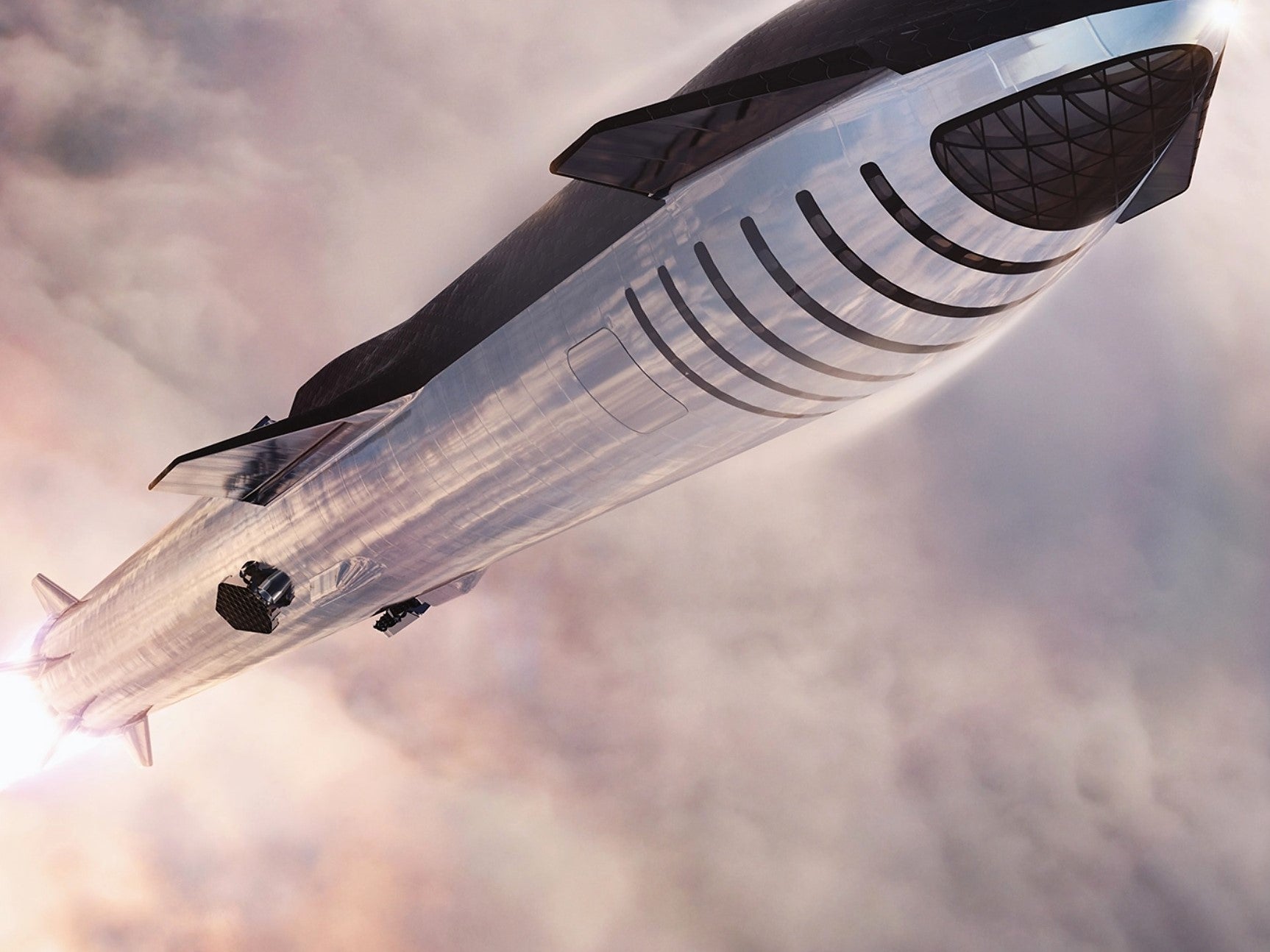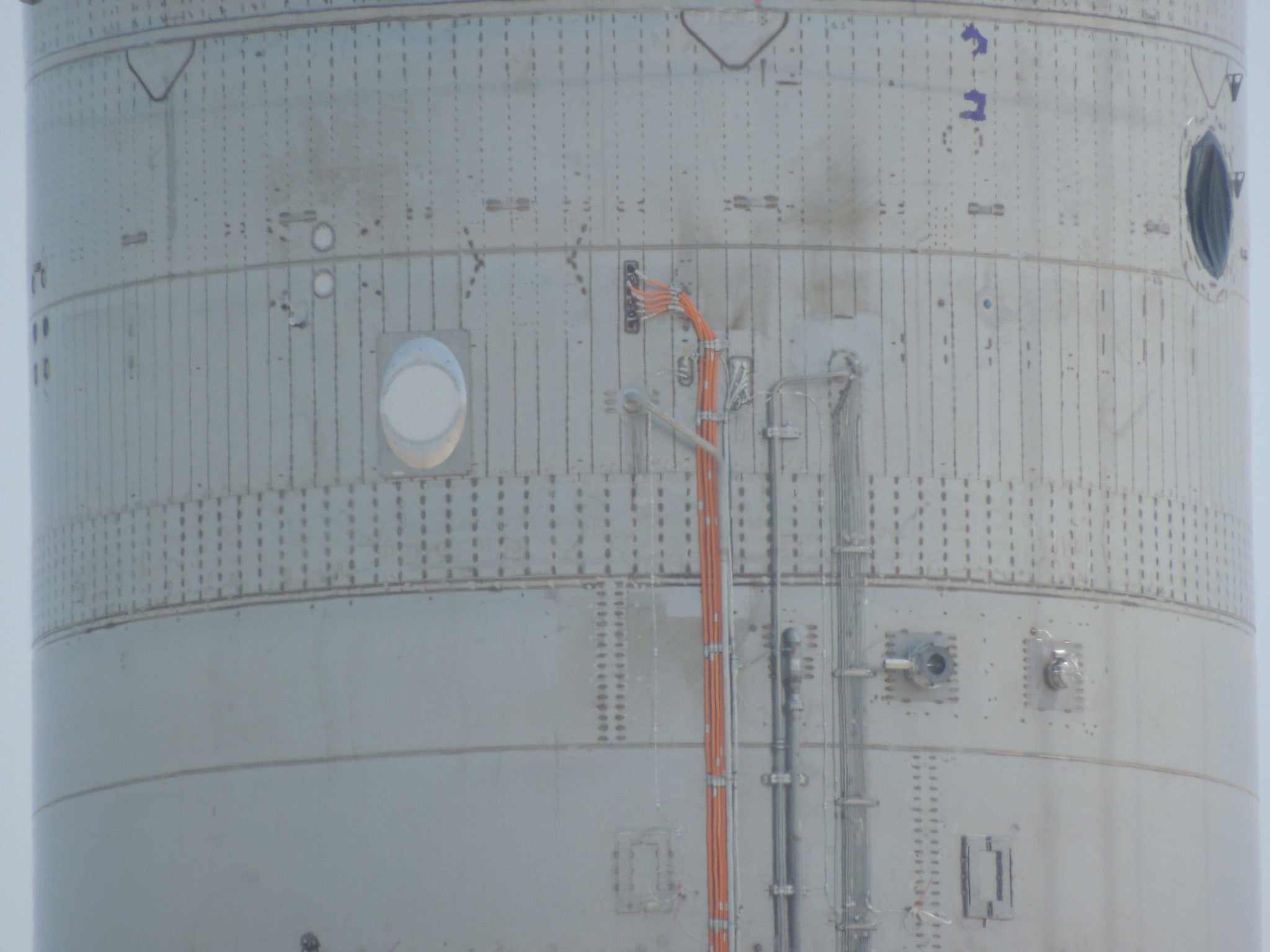SpaceX launch: Starship SN15 fitted with Starlink internet dish
Both Starlink and Starship could prove crucial to colonising Mars, with the former funding the development of the latter

Your support helps us to tell the story
From reproductive rights to climate change to Big Tech, The Independent is on the ground when the story is developing. Whether it's investigating the financials of Elon Musk's pro-Trump PAC or producing our latest documentary, 'The A Word', which shines a light on the American women fighting for reproductive rights, we know how important it is to parse out the facts from the messaging.
At such a critical moment in US history, we need reporters on the ground. Your donation allows us to keep sending journalists to speak to both sides of the story.
The Independent is trusted by Americans across the entire political spectrum. And unlike many other quality news outlets, we choose not to lock Americans out of our reporting and analysis with paywalls. We believe quality journalism should be available to everyone, paid for by those who can afford it.
Your support makes all the difference.SpaceX has attached a Starlink receiver to its latest Starship prototype, allowing the Mars-bound rocket to have high-speed internet access.
Space enthusiast Carter Goode spotted a Starlink dish two thirds of the way up Starship SN15 as the next-generation craft sat on the launchpad of SpaceX’s facility in Boca Chica, Texas, ahead of a flight test this week.
SpaceX also requested temporary permission to operate a “single user terminal... on an experimental basis at altitudes not to exceed 12.5km”.
There are currently more than 1,300 Starlink satellites in orbit around the Earth, with plans to develop a constellation of up to 42,000 over the next few years.
Starlink’s broadband network is already operational in areas of the US, Canada, Australia, New Zealand, Germany, Poland and the UK, while some aircraft and cargo ships are also expected to make use of it.

Speeds will rival current fibre broadband but Starlink is not being built to serve people in built-up areas. The idea is to instead offer internet connectivity to locations where access has typically been unreliable or completely unavailable.
SpaceX is aiming to continue expanding the Starlink network to achieve “near global coverage of the populated world in 2021”.
SpaceX CEO Elon Musk has said the space internet project will be used to fund his ambition to colonise Mars by 2050.
The technology billionaire, who earlier this year briefly became the richest person on Earth, has frequently spoken of his aim to transform humanity into a multi-planetary species in order to ensure its future survival.
Last month he repeated a pledge that he will use his vast wealth in order to make this a reality.
“I am accumulating resources to help make life multiplanetary and extend the light of consciousness to the stars,” he wrote on Twitter.
“About half my money is intended to help problems on Earth and half to establish a self-sustaining city on Mars to ensure the continuation of life (of all species) in case Earth gets hit by a meteor like the dinosaurs or WW3 happens and we destroy ourselves.”
Both Starlink and Starship will prove crucial to colonising Mars, with the former potentially funding the development of the latter.
Mr Musk hopes to build up to 100 Starships a year, each capable of carrying up to 100 people onboard. Crewed flights could take place as early as next year, with the first commercial trip already planned for 2023.
To achieve this, SpaceX is carrying out a hugely ambitious testing schedule that has already seen four major high-altitude flight tests since December.
All four have ended in explosions, though Mr Musk claims major upgrades will avoid this fate for Starship SN15.



Join our commenting forum
Join thought-provoking conversations, follow other Independent readers and see their replies
Comments